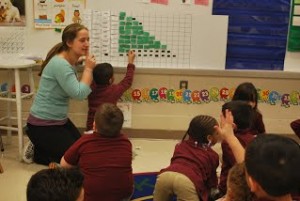PAIRED CONSTRAINTS
The dictionary defines constraints as one-side, connoting limitation, restriction, or scarcity. In contrast, the problem-solving literature considers constraints two-sided, pairs with different purposes. One of each pair satisfies the dictionary definition: it precludes something specific in the current situation. The other expands the definition: it directs and promotes search for a substitute. The word specific is key. Problem-solving requires precluding reliable, predictable responses (the ones experts get stuck in) and promoting novel, unexpected ones. It also requires relatively high levels of variability.
VARIABILITY
Variability is a measure of how differently something is done. We think of it as a continuum, with high and levels at its extremes.
LOW ___________________________________________HIGH
Reliability Novelty Creativity/Innovation
Reliability (say painting a still-life by number) goes near the low end. Novelty (painting a still-life from life) is nearer to the high end. Differences in variability levels occur between individuals on the same task and between tasks for the same individual. The latter, intrapersonal differences led to the theory that habitual or learned variability levels, like skills, are learned. The term habitual refers to a variability level that someone usually displays in a particular task or domain. The idea is this, along with learning how to do something, you also learn how differently to continue doing it.
We use computer games (with college and grade school students) to test predictions based on this theory. Our past research has shown two things: first, that these levels are acquired early in exposure to new problem or skill areas, and second, how early constraints (precluding or promoting high or low variability in specific ways) determine acquired levels. More recent research involves transfer. We have shown that variability facilitates skill transfer to novel tasks by sensitizing learners to changes in conditions/requirements and how instructions facilitate transfer (by alerting learners to similarity in conditions). The lab is currently investigating the interactive effects of variability and context.
CREATIVITY/INNOVATION
Creativity appears on our variability continuum under novelty. This is because all creative responses are novel, but not all new ones are creative. To be called creative, the new thing must also be useful or generative or influential. Useful means that it solves a problem; generative, that it leads to other ideas or things; influential, that it changes the way other people do or think about things like it.
Creativity (or innovation) problems, like the constraints in our problem-solving model, also come in pairs: the first is starting, the second, continuing to do something new. How do you start to do something new? According to the current model, you start with a single substitution. You select one thing from an existing situation to preclude. You proceed by identifying and specifying a substitute. The process is iterative and incremental. Precluding starts it; substitutions sustain it. As our studies show, constraint pairs cascade, one requiring another. We call it Solution by Substitution.
How do you continue doing something new? Three ways. First, you can make substitutions in your own solution path to satisfy the same goal in a different way or in a different context. Second, you can refine your goal criterion by adding sub-goals. Third, you can make your tool box bigger by acquiring new skills or new collaborators.
… AND MATH
The paired constraint model was used to develop an early math curriculum called Only the NUMBERS Count©. The curriculum precluded most elements of existing programs and promoted an explicit base-10 count (11 is called ten-one, 20 is called ten-two), continuous, highly variable practice focused on thinking in numbers, symbols, and patterns, and a single manipulative for kindergarten and first grade (the count-and-combine chart). The first two videos show students making addition combinations in kindergarten, and translating word problems into subtraction problems in first grade. The third video shows a second grade class using the multi-operation chart which was designed to teach multiplication, division, and fractions simultaneously. One photo shows a pilot group of fourth graders after a prime factorization “bee.” The winners wear Columbia University tee shirt.





